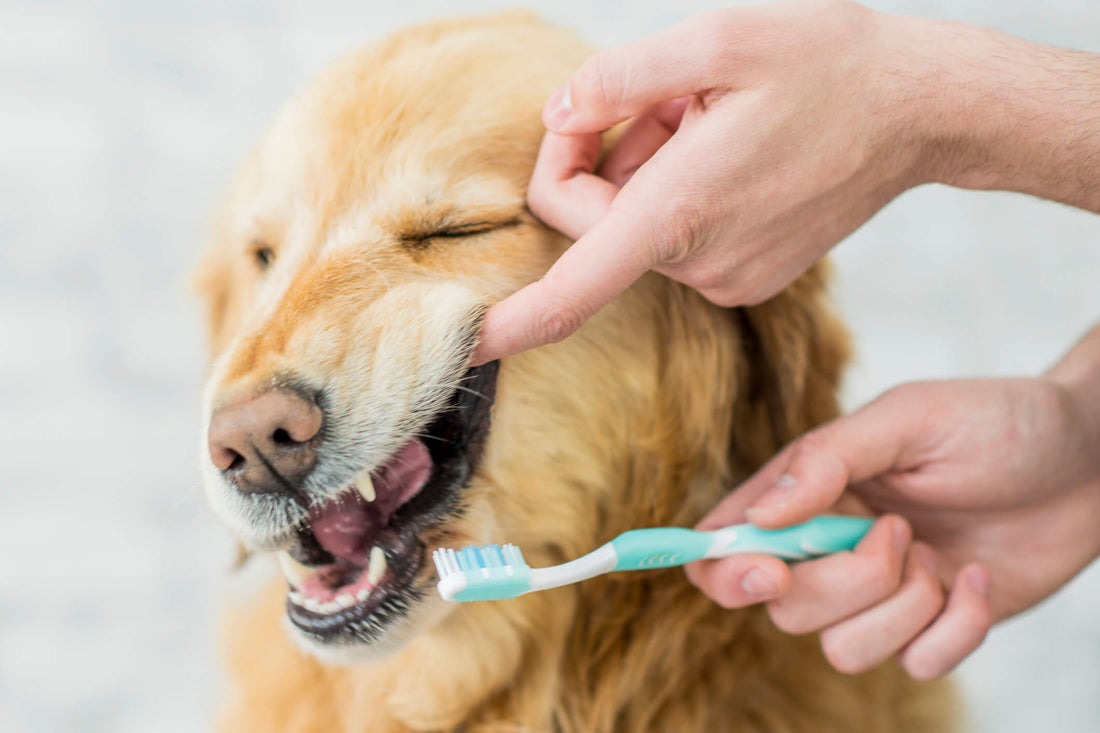
Common Issues Arising from Poor Canine Oral Health
We all grew up being taught to brush our teeth twice a day to prevent the buildup of plaque and fight off cavities. Dental hygiene is second nature to many adults. But with this information instilled in our brain, how is it that we often forget to take care of another important set of teeth: our dogs?
That’s right—dogs need to have their teeth taken care of too, just like ours! Your dog relies on its teeth to eat and gnaw on toys and treats. Unfortunately, a large majority of dogs will have an oral disease by age three, and this is largely because pet owners forget to take care of their dog’s teeth.
Without routine oral care, your dog’s mouth can quickly become coated in plaque—or worse, infected with disease. There are a number of conditions that can overtake your dog’s tooth cavities and gums and make it extremely painful for them to eat.
In order to protect your dog’s pearly whites, you should brush its teeth at least once a day and feed it a well-balanced diet including treats that promote a healthy mouth.
Common canine oral hygiene problems
Veterinarians often say they see a large number of dogs come it for routine visits, only to discover that they are showing signs of oral disease. A lack of oral hygiene can lead to bad breath, loose teeth, sores, rotting gums, infected tooth sockets and much worse.
Gingivitis, or inflammation of the gums, is one of the most common problems in dogs. Thankfully, it can be treated and usually goes away. Other diseases like periodontitis, which deteriorates the gum and tissue around the oral cavity, or pyorrhea, which causes inflammation and pus in the tooth sockets, are more difficult to treat and can have some more complicated side effects.
If left untreated, oral diseases like periodontitis cause a buildup of harmful bacteria that may release toxins into your dog’s bloodstream, leading to possible organ failure in the brain, liver, heart and kidneys. Deterioration of the tissues surrounding the teeth and gums can also lead to severe jaw problems. Symptoms of tooth or gum problems may include:
- Foul breath
- Excessive drooling
- Swollen, red or bleeding gums
- Missing teeth
- Cysts in the mouth
- Unwillingness to eat
Many dog owners don’t notice that their pooch is having dental issues until it is too late, because they don’t tend to check on their mouths. By implementing a routine of brushing your dog’s teeth and inspecting its gums, you might be able to catch oral diseases much faster.
Keeping your dog’s pearly whites clean
Fortunately, there are multiple things you can do for your dog to keep its mouth healthy and sparkling white. To start, make sure you’re feeding your dog a well-balanced diet filled with meat. This kind of diet will ensure the mouth is healthy by introducing the right mixture of bacteria.
Also, give your dog chewy and hard toys to play with to maintain strength in the teeth and jaw. Not only will your pup have fun gnawing on a bone or rawhide, but they’ll be keeping their teeth clean, too.
Perhaps most importantly, most dog owners should aim to brush their dog’s teeth at least once a day to make sure no plaque and bacteria are accumulating on the teeth. This process is not as difficult as it may appear, but may take time to get your dog used to it.
To start, purchase a toothbrush and toothpaste made for dogs. Never use human toothpaste, as the fluoride in most pastes can make your dog sick. Some companies make special toothpastes for dogs that taste like meat, which will make your dog happier to sit while you brush!
Lift your dog’s lip to expose the gums and gently brush in circular motions across all the teeth, paying close attention to the teeth in the far back. Once all teeth have been brushed, you should reward your pooch with a treat to provide positive reinforcement for the brushing experience.
In addition to brushing, try giving your dog treats, supplements and rinses that can help keep its mouth clean and healthy.
Finally, you’ll want to take your dog to get a yearly dental hygiene visit at the vet. Your vet will likely sedate your pooch and thoroughly inspect its mouth and teeth, giving it a deep cleaning in the process. This allows your vet to be sure your dog doesn’t have any infections or oral diseases that could lead to bigger problems.
If you routinely care for your pup’s teeth as much as you care for your own, you will keep your pooch happy and healthy and even potentially extend its lifespan by protecting it from harmful diseases.


